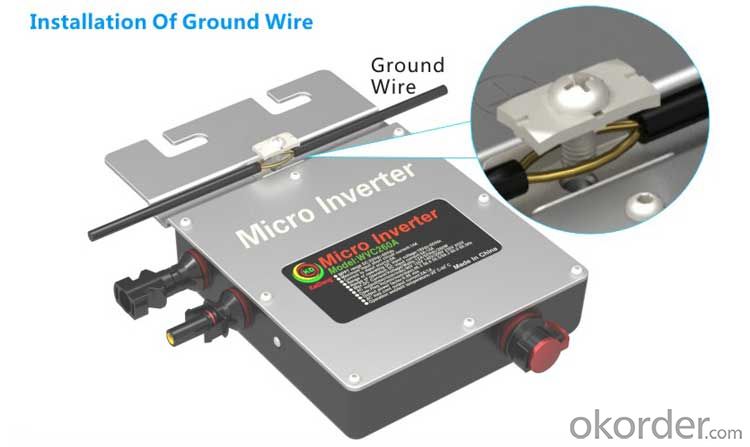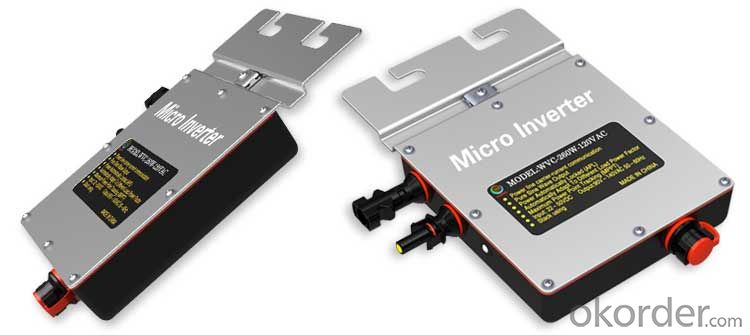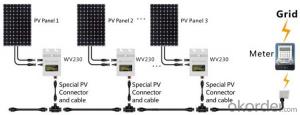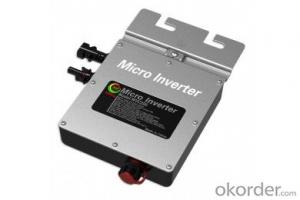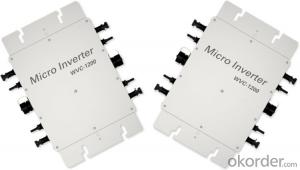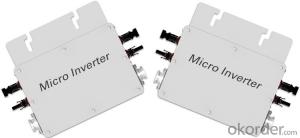Solar Inverter 10kva KD-WV230 Interver, 260W, High Efficiency & Best Cost-Effectiveness
- Loading Port:
- China main port
- Payment Terms:
- TT OR LC
- Min Order Qty:
- 1000 pc
- Supply Capability:
- 100000 pc/month
OKorder Service Pledge
OKorder Financial Service
You Might Also Like
Structure
DC input voltage range:22-50VDC
AC output voltage range:80-160VAC/180-260VAC
AC output power :260W
AC frequency range:50Hz/60Hz
G.W.:1.1kg
Size:250mm*200mm*60mm
KD-WV230 Series Using IP67 waterproof streamline design, Can effectively prevent rainwater on the surface erosion, Built-in high-performance Maximum Power Point Tracking(MPPT)Function,Better able to track changes in the solar luminosity and control different output power, Effectively capture and collect sunlight. AC electric power transmission using the reverse transmission technology, Is one of our patented technology, The inverter output power can provide load priority use, Extra electricity to the grid, Efficient use of the inverter to the power emitted, Electricity transmission rate of up to 99%.
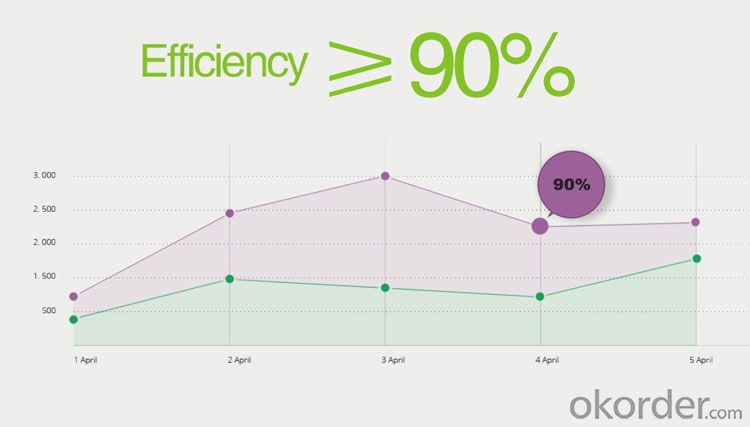
Features

Pure Sine Wave Output;
High performance Maximum Power Point Tracking(MPPT);
Power Automatically Locked(APL);
Reverse power transmission;
High-Frequency High Conversion Rate;
Anti-Islanding Protect;
Input /output is fully isolated to protect the electrical safety;
Multiple parallel stacking;
The Leading Patent Technology;
IP67 WaterProof;
Flexible Installation;
Simplify maintenance (user serviceable)
High Efficiency & Best Cost-Effectiveness
Images
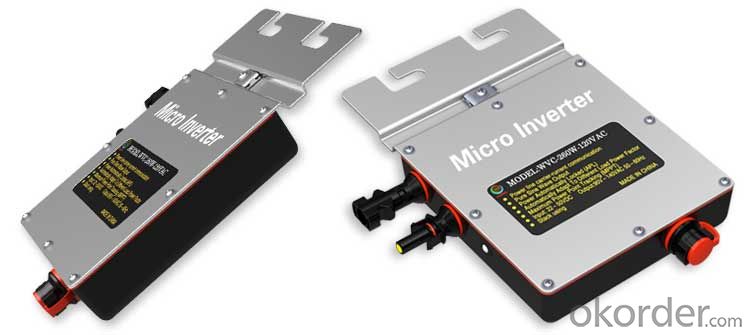

Specification
Input Data | KD-WV230-120VAC/230VAC | ||||
Recommended input power | 200-300Watt | ||||
Recommend the use of PV modules | 300W/Vmp>34V/Voc<50V | ||||
Maximum input DC voltage | 50V | ||||
Peak power tracking voltage | 25-40V | ||||
Operating Voltage Range | 17-50V | ||||
Min / Max start voltage | 22-50V | ||||
Maximum DC short current | 15A | ||||
Maximum Input Current | 9.8A | ||||
Output Data | @120VAC | @230VAC | |||
Peak power output | 260Watt | 260Watt | |||
Rated output power | 250Watt | 250Watt | |||
Rated output current | 2.08A | 0.92A | |||
Rated voltage range | 80-160VAC | 180-260VAC | |||
Rated frequency range | 57-62.5Hz | 47-52.5Hz | |||
Power factor | >96% | >96% | |||
Maximum units per branch circuit | 15PCS(Single-phase) | 30PCS(Single-phase) | |||
Output Efficiency | @120VAC | @230VAC | |||
Static MPPT efficiency | 99.5% | 99.5% | |||
Maximum output efficiency | 92.3% | 94.6% | |||
The average efficiency | 91.2% | 93.1% | |||
Night time power consumption | <50mW Max | <70mW Max | |||
THDI | <5% | <5% | |||
Exterior | |||||
Ambient temperature | -40°C to +60°C | ||||
Operating temperature range (inverter inside) | -40°C to +82°C | ||||
Dimensions (WxHxD) | 195mm*130mm*32mm | ||||
Weight | 0.65kg | ||||
Waterproof Rating | IP67 | ||||
Cooling | Self-cooling | ||||
Feature | |||||
Power transmission mode | Reverse transfer, load priority | ||||
Electromagnetic compatibility | EN50081.part1EN50082.part1 | ||||
Grid disturbance | EN61000-3-2 Safety EN62109 | ||||
Grid detection | DIN VDE 1026 UL1741 | ||||
Certificate | CEC,CE National patent technology | ||||
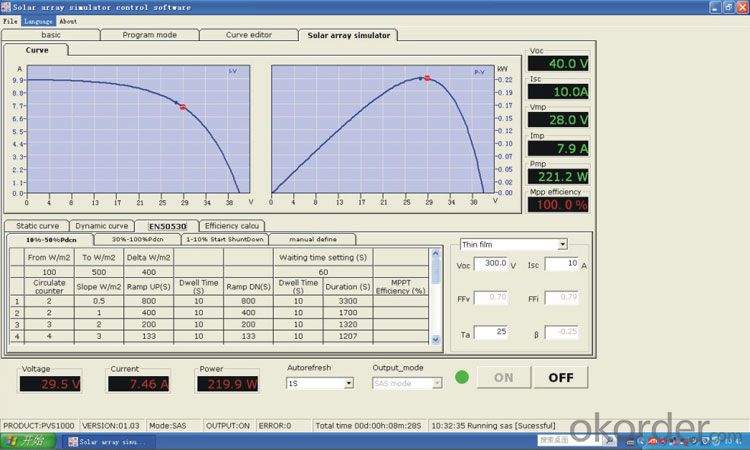 | |||||
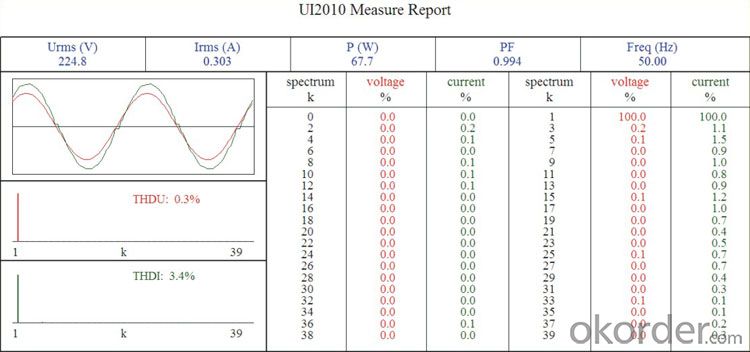
FAQ
Can we visit your factory?
Surely, I will arrange the trip basing on your business schedule.
Can you do OEM for us?
Yes, we can.
How do you pack your products?
We have rich experience on how to pack the panels to make sure the safety on shipment when it arrives at the destination.
Can you help us install the module if we cooperate with you?
We haven’t entered into installation sector, but we have the plan in near future.
- Q: Can a solar inverter be connected to the grid?
- Yes, a solar inverter can be connected to the grid. In fact, connecting a solar inverter to the grid is a common practice in solar energy systems. The inverter is responsible for converting the direct current (DC) produced by the solar panels into alternating current (AC) that can be used by homes or businesses or fed back into the electrical grid. This allows solar energy systems to generate electricity for consumption while also contributing excess power to the grid.
- Q: How does the input frequency range affect the performance of a solar inverter?
- The input frequency range directly affects the performance of a solar inverter. The inverter is designed to convert the variable direct current (DC) generated by the solar panels into stable alternating current (AC) that can be used by household appliances or fed into the grid. If the input frequency deviates from the specified range, it can lead to inefficient or unstable operation of the inverter. A wider input frequency range allows the inverter to handle fluctuations in the solar power generation, ensuring optimal performance and compatibility with different grid conditions.
- Q: Can a solar inverter be used with solar-powered air conditioning systems?
- Yes, a solar inverter can be used with solar-powered air conditioning systems. The solar inverter is responsible for converting the direct current (DC) generated by the solar panels into alternating current (AC) that can be used to power various electrical appliances, including air conditioning units. By connecting the solar inverter to the solar panels and the air conditioning system, the generated solar energy can be efficiently utilized to power the AC system.
- Q: What is the role of a data logger in a solar inverter?
- A data logger in a solar inverter is responsible for monitoring and recording important data related to the performance of the solar power system. It captures and stores information such as solar energy production, voltage levels, current flow, temperature, and other relevant metrics. This data is crucial for analyzing the efficiency and overall functioning of the solar inverter, as well as for identifying any potential issues or areas for improvement. Additionally, the data logger enables users to track the energy output and consumption, helping them make informed decisions about energy usage and potentially optimize their solar power system.
- Q: Can a solar inverter be used in a building-integrated photovoltaic system?
- Yes, a solar inverter can be used in a building-integrated photovoltaic (BIPV) system. The solar inverter is an essential component in a BIPV system as it converts the direct current (DC) generated by the photovoltaic panels into alternating current (AC) that can be used to power the building's electrical loads or fed back into the grid.
- Q: What happens to excess solar energy generated by the inverter?
- Excess solar energy generated by the inverter can be either stored in batteries for later use or fed back into the electrical grid, depending on the setup of the solar power system.
- Q: Can a solar inverter be used in regions with extreme weather conditions?
- Yes, a solar inverter can be used in regions with extreme weather conditions. However, it is important to choose an inverter that is designed and rated for the specific weather conditions of that region. For example, there are solar inverters available that are built to withstand high temperatures, extreme cold, humidity, and even harsh weather events such as hurricanes. It is crucial to consider the environmental factors and select an inverter that is suitable for the specific climate conditions to ensure optimal performance and longevity.
- Q: What is the maximum input voltage for a solar inverter?
- The maximum input voltage for a solar inverter typically depends on the specific model and manufacturer. However, in general, solar inverters are designed to handle input voltages ranging from around 250 to 600 volts.
- Q: Can a solar inverter be used in a stand-alone solar system?
- Yes, a solar inverter can be used in a stand-alone solar system. In fact, it is an essential component as it converts the direct current (DC) generated by the solar panels into usable alternating current (AC) for powering appliances and electronics. This allows the stand-alone solar system to meet the energy needs of off-grid locations or areas with limited access to the main power grid.
- Q: Can a solar inverter be used with a solar-powered electric vehicle charging station?
- Yes, a solar inverter can be used with a solar-powered electric vehicle charging station. The solar inverter helps convert the direct current (DC) power produced by the solar panels into alternating current (AC) power that can be used to charge electric vehicles. This allows for efficient and sustainable charging of electric vehicles using solar energy.
Send your message to us
Solar Inverter 10kva KD-WV230 Interver, 260W, High Efficiency & Best Cost-Effectiveness
- Loading Port:
- China main port
- Payment Terms:
- TT OR LC
- Min Order Qty:
- 1000 pc
- Supply Capability:
- 100000 pc/month
OKorder Service Pledge
OKorder Financial Service
Similar products
Hot products
Hot Searches
Related keywords


